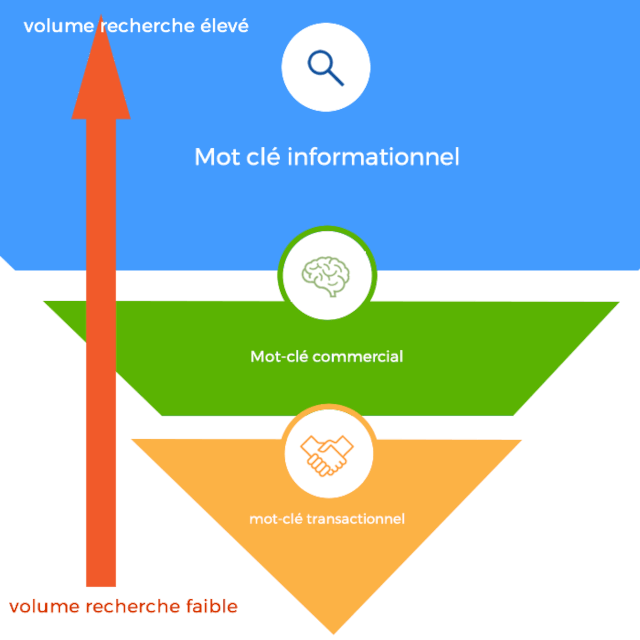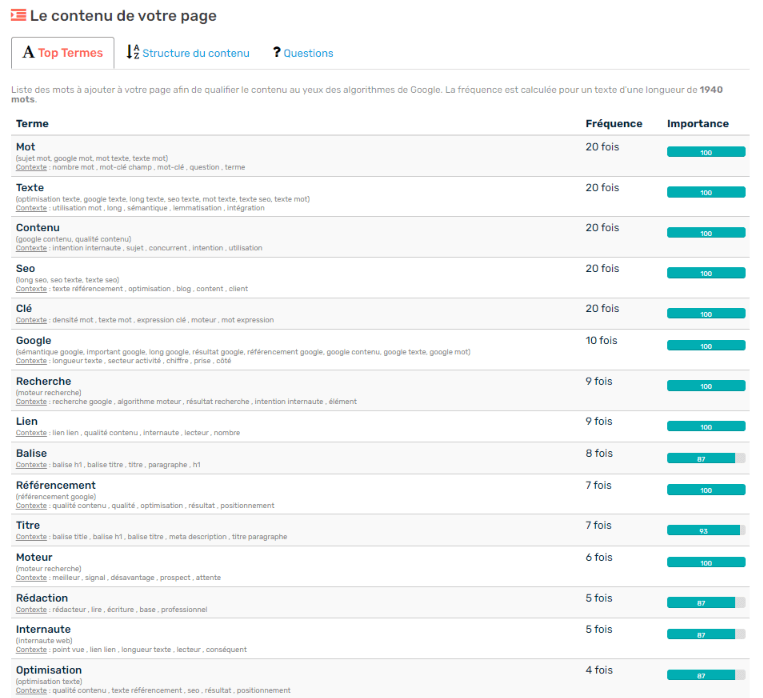
To find relevant keywords with good SEO potential, you can spend time researching the information available in Google’s results pages (other questions asked and related searches). To save time , tools like Uberseggest or SEMRush are very effective.
3. Structure the SEO text
To optimize a text for SEO , it must meet the editorial standards imposed by search engines. Fortunately, these are mainly based on the reading habits of Internet users. So, when you prepare the editorial plan , you must always keep the following 4 points in mind .
- Main title : The title (H1) of your SEO text is very important. It must be unique, contain your main query and be representative of the content proposed in the body of the text.
- Introduction : Also called the lead, the introduction serves to quickly capture the reader’s attention and make them want to continue reading. So take your time to take care of this crucial element of your SEO text and place your most relevant keywords there!
- Subheadings : Ideally, your content should be divided into several paragraphs, each announced by a subheading (H2), which can be further subdivided (H3, H4, etc.). Include the main query and its equivalents in these paragraphs to optimize your SEO.
- Conclusion : The final impression you leave is crucial, in everyday life as well as in your writing. That’s why you must once again capture your reader’s interest in the conclusion and offer them a concrete way to take action.
4. Write comprehensive content
The goal of your SEO text is now to provide complete and detailed information on the topic you are discussing. Think about what you yourself would want to know if you had searched for this topic on Google and try to answer it precisely .
However, this is not enough to satisfy SEO algorithms . Indeed, to make them understand that you have covered the topic in its entirety , you must work on the semantics of your content and offer a complete and varied lexical field .

5. Place internal and external links
Internal links allow you to provide the user with additional information on the topic covered in your SEO text. This also allows you to retain your traffic and potentially lead them to a conversion page. It is also an important element for indexing robots to crawl your site .
Learn more about this topic by reading this other blog post: Internal linking: the backbone of SEO .
Outbound (or external) links also aim to provide details to your content. However, remember to force them to open in a new window to avoid losing your visitor! If you cite quality sources , SEO algorithms consider your text to be legitimate, which promotes natural referencing .
6. Optimize metadata
Metadata is the information displayed directly on search engine results pages . It is therefore essential for improving click-through rates . There are two types of metadata , each with its own specific importance.

- Metatitle : The title tag (H) of your SEO text should contain your main query or its equivalent to improve your SEO. It should also perfectly describe the information offered in your content.
- Meta description : The page description is apparently no longer a factor taken into account by Google since 2009 ! Nevertheless, it remains a crucial element in forcing the Googler ’s decision to click on your result.
7. Add Media
Offering media in your SEO text helps to relax the reading , maintain interest and offer additional information in various formats:
- illustration images;
- screenshots;
- infographics;
- graphics;
- diagrams;
- gifs;
- videos;
- podcasts;
- etc.
